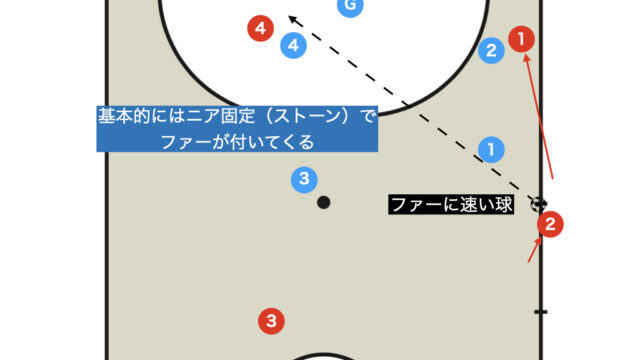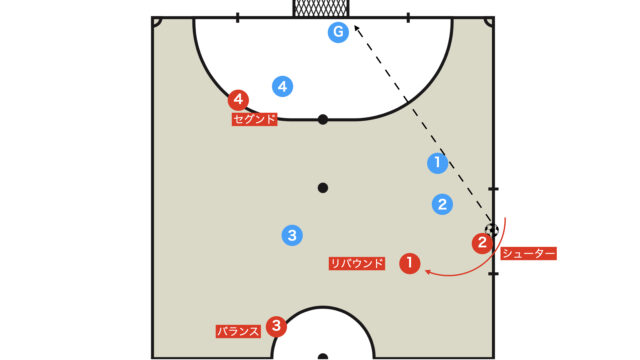The set-pieces explained in this article are the very famous sign play shown below.
Initial Setup and Opening
Initial Setup: 1-3

- Red No.1 (Kicker) = Shooter (preferred to have the dominant foot on the opposite side; in this diagram, left-footed)
- Red No.2 = pivo (establishes the starting point in front of the goal)
- Red No.3 = Blocker (blocks the marking on Red No.1)
- Red No.4 = fixo (supplies passes to the pivo)
Opening: Pass to fixo

- The kicker passes to the fixo positioned at the safe spot
- The two front players (Red No.2 and Red No.3) change positions
Process
Process: Pass to the pivo and Indirect Block
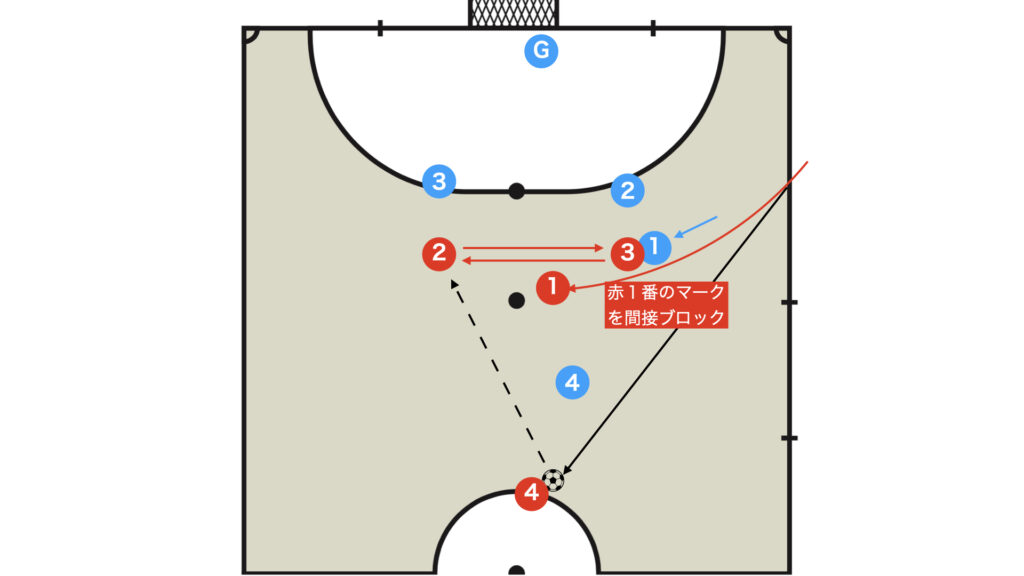
- Red No.1 enters the center from the blind spot
- Red No.3 performs an indirect block on Red No.1’s marker
- Red No.4 (fixo) should pass quickly to Red No.2 (pivo) once receiving the ball
Tactical Intent (Effect)
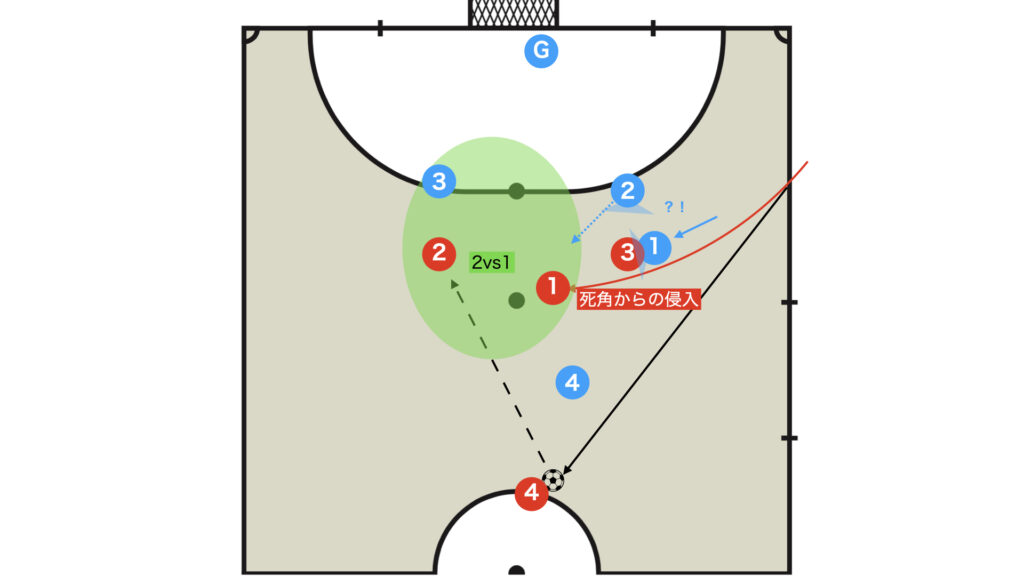
By having the kicker drop the line and move into the area in front of the goal, combined with the indirect block by Red No.3, Red No.1 is momentarily freed, creating a brief 2vs1 numerical advantage in front of the goal.
Countermeasures for This Set-piece

- Blue No.1 and Blue No.2 exchange marks (to counter the block)
- Blue No.4 abandons marking fixo (Red No.4) and presses Red No.2 (pivo), going for a double team to win the ball
Finish
Pattern 1: pivo drops the ball, enabling the kicker to become the shooter
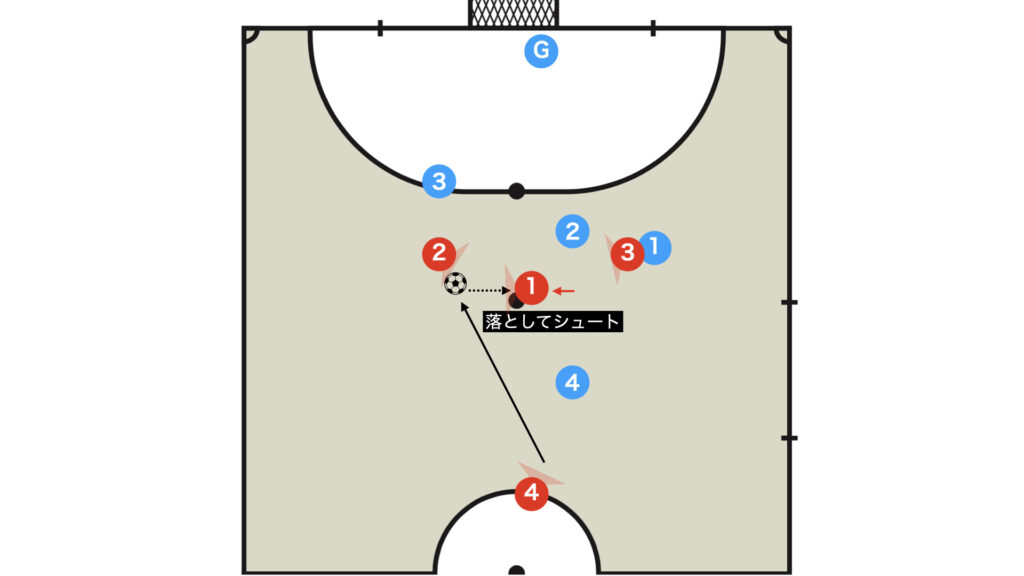
At this moment, it is crucial for the pivo to deliver a drop pass, taking into account the shooter’s body positioning to make the shot easier.
By now, you should understand the entire sequence; let’s take a look at a real match.
Pattern 2: pivo reverses and shoots
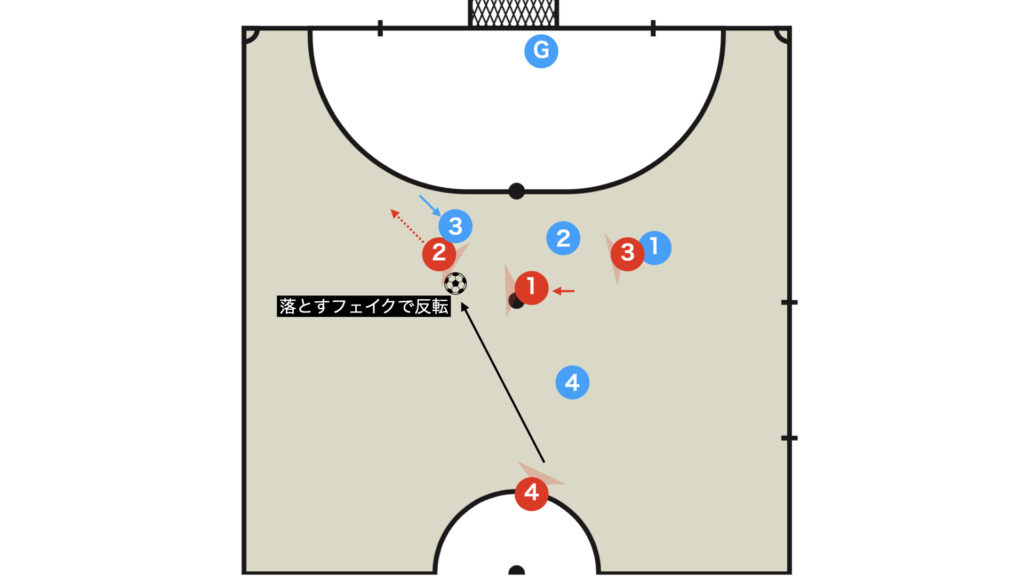
When the marking on the pivo appears likely to call for a drop pass or when an inside press is sensed, reversing is an effective tactic.
Creating the Finish Triangle

In the event of a reversal, form a finish triangle as shown in the diagram above.
At that moment, there is a high possibility that the goleiro will come forward to block; in such cases, passing to the segundo is effective.
Summary
This set-piece can also be applied to corner kicks as follows.
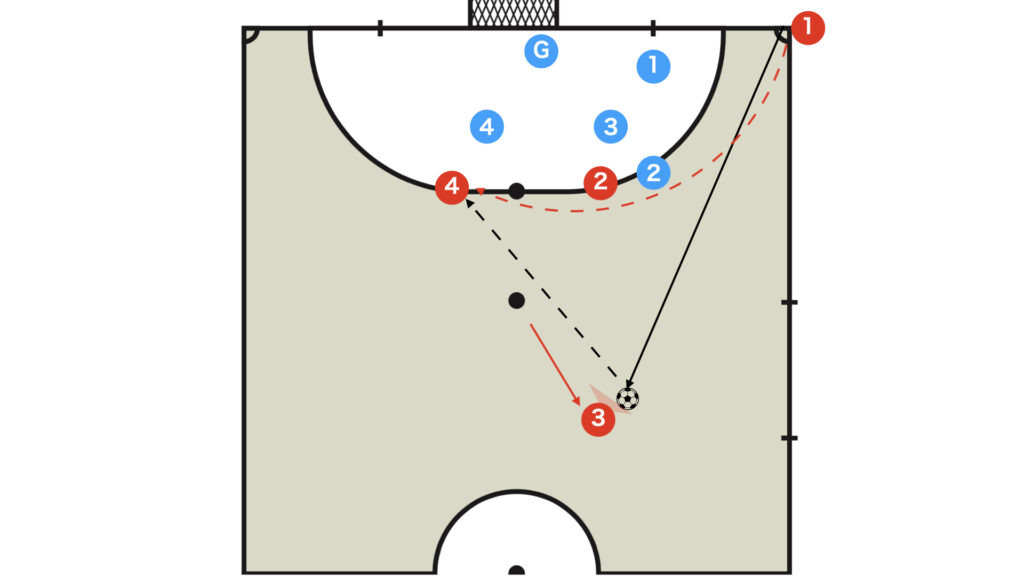
While there are patterns without a position change as shown in this diagram, it is advisable that the two front players change positions as much as possible to more effectively shake off the opponent’s marking.
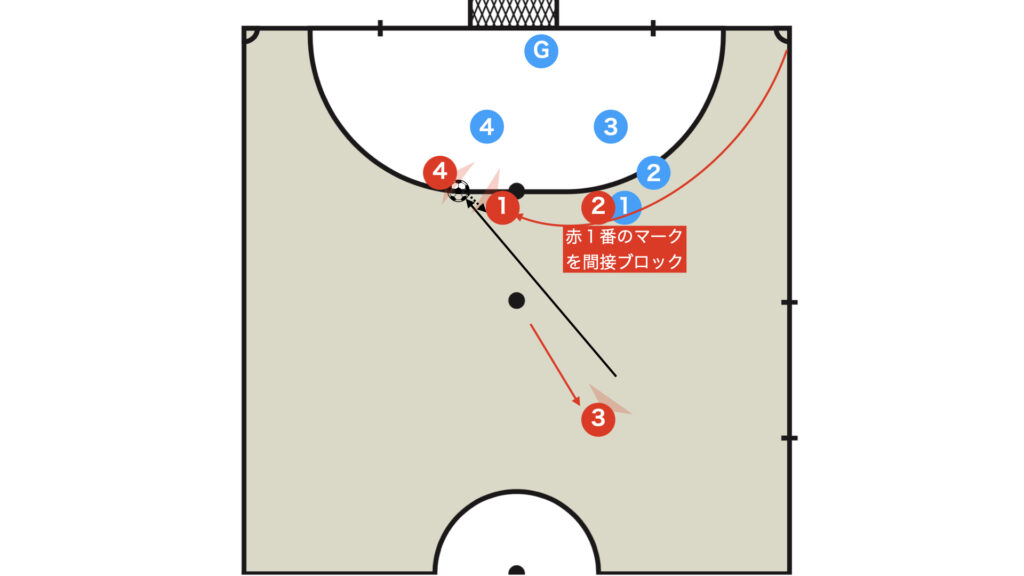
This set-piece is extremely renowned and effective, so teams that are not scoring enough from set-pieces might consider implementing it.
Thank you very much for reading this article to the end.
If you found this article useful, please consider sharing it using the social media share buttons above.
We regularly share valuable insights on futsal tactics on Twitter, so if you haven’t followed us yet, we’d appreciate your support!
We are committed to raising the level of futsal in Japan by sharing high-quality information through discussions with individuals who have coaching experience in the F.League and overseas.
If you have any questions or notice any mistakes, feel free to leave a comment below.
We update our articles regularly, so if you’d like to keep reading, please bookmark our site or search for “FutTech”!
